The Renaissance era, spanning from the 14th to the 17th century, was a period of great cultural and intellectual growth in Europe. It was a time of rebirth after the Middle Ages, marked by a renewed interest in the classical learning of ancient Greece and Rome. The fashion of the Renaissance period reflected this cultural richness, with garments that were both luxurious and symbolic of the wearer’s status and wealth. If you’re looking to step back in time and feel like a royal, here are 13) renaissance-inspired dresses to impress outfit ideas that will transport you to the courts of Europe.
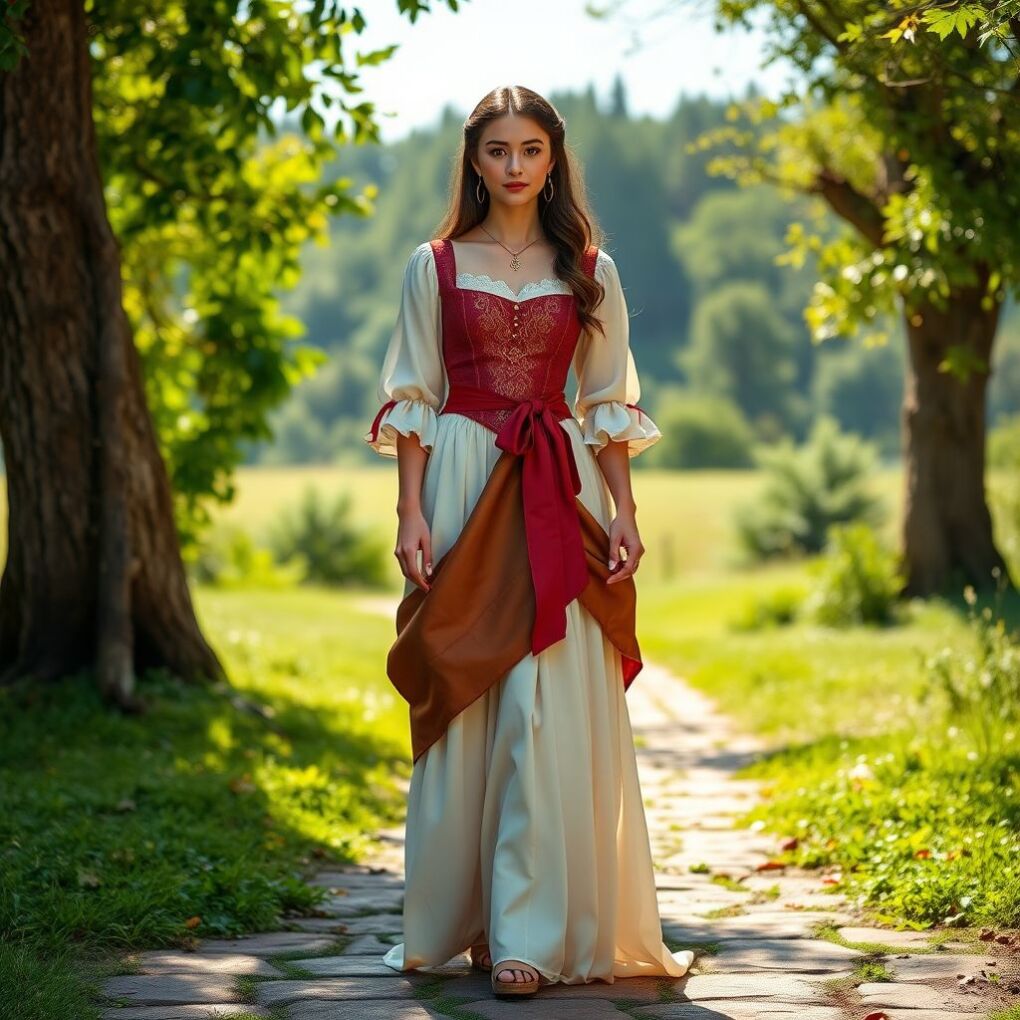
1. The Royal Duchess
Imagine yourself as a duchess in the court of a Renaissance monarch. Your gown should be made of the finest brocades and velvets, adorned with gold and silver thread embroidery. The skirt will be full and may feature a train, while the bodice will be tight-fitting, emphasizing a small waist. A high-standing collar and a pair of bell sleeves will complete the look.
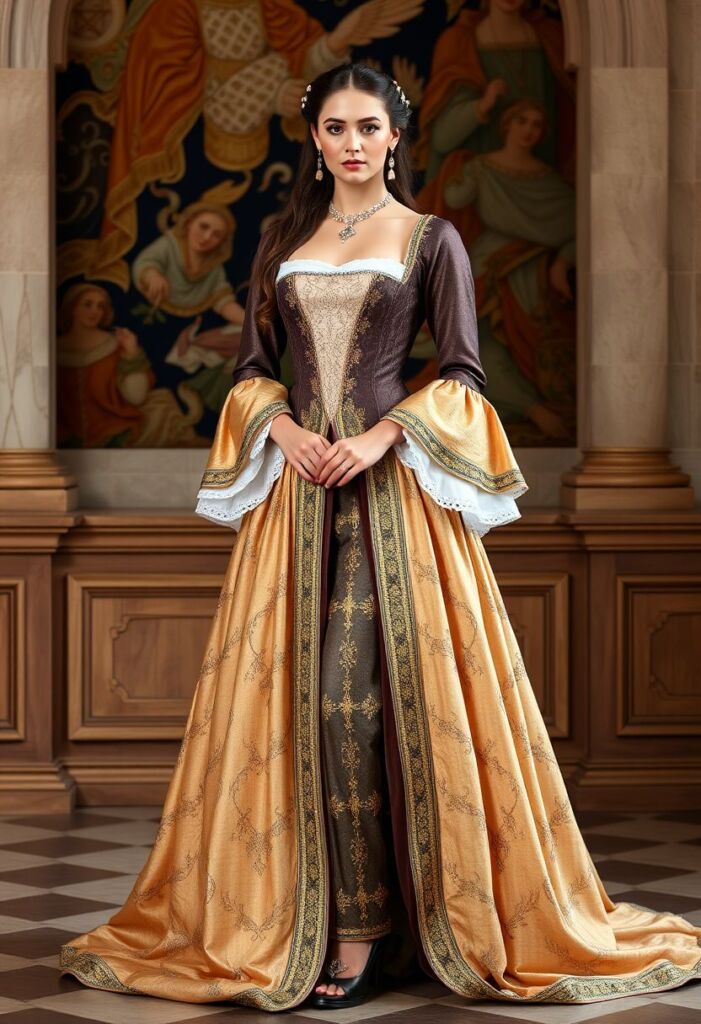
Pro Tip
To achieve an authentic look, consider adding a jewelled belt or a jewelled booklet. These accessories not only add to the opulence of your outfit but also reflect the Renaissance era’s love for adornment.
2. The Knight’s Consort
For those who wish to portray the consort of a knight, think of a gown that is both practical and elegant. Choose fabrics that are sturdy yet fine, like wool or linen, and keep the colours muted but rich, such as forest greens and deep burgundies. A belt with a metal buckle will tie the look together, and a cloak can be thrown over one shoulder for an air of mystery and grace.
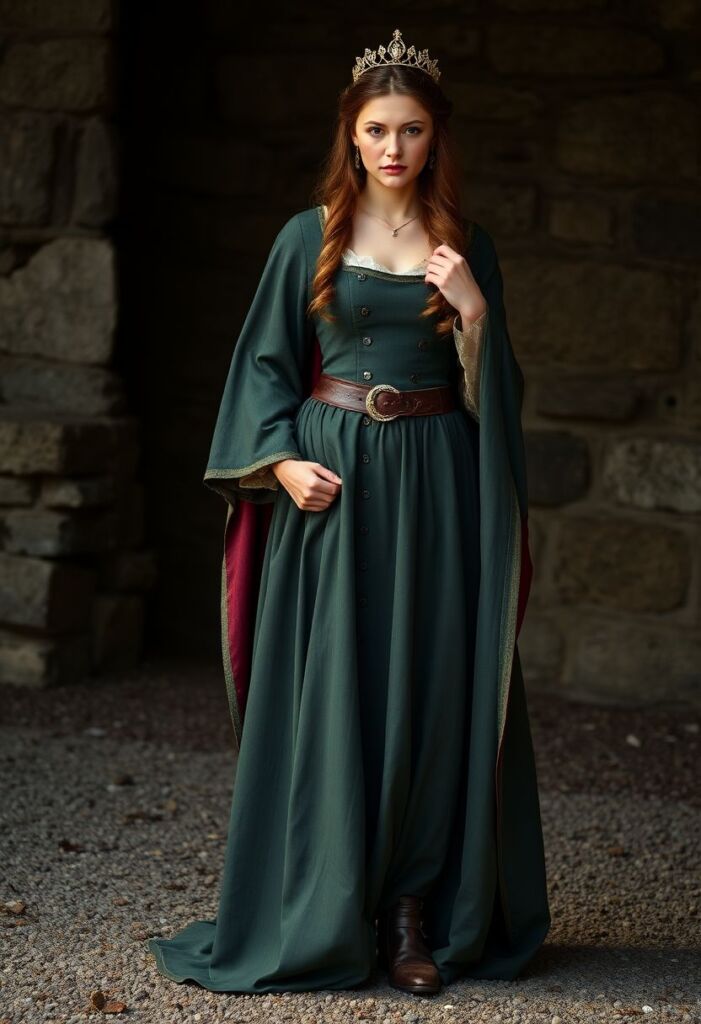
Pro Tip
Incorporate a small, delicate crown or tiara into your hairstyle. This will not only add an authentic touch to your ensemble but will also help to hold your hair in place throughout the day.
3. The Merchant’s Wife
The merchant class was rising in prominence during the Renaissance, and their wives would often be seen in luxurious yet practical attire. Opt for a gown with a fitted bodice and a full skirt that reaches the ankles. The sleeves should be long and possibly detachable, and the fabric could be fine cotton or silk.
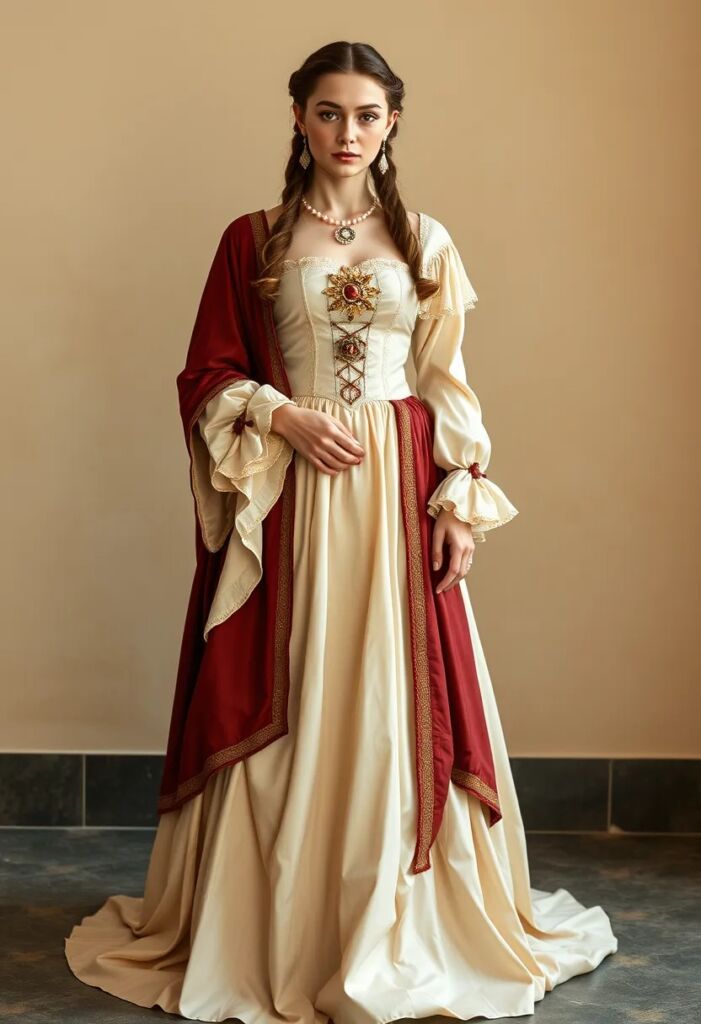
Pro Tip
Add a touch of opulence with a jewelled brooch or a string of pearls. These were symbols of wealth and could be worn by those of the merchant class to display their success.
4. The Young Courtier
Young courtiers of the renaissance period often wore vibrant and playful outfits that reflected their youthful energy and the era’s love for innovation. Think of a gown with a full skirt, a fitted bodice, and a ruff collar. the dress should be in bright colors, and the fabric should be of high quality.
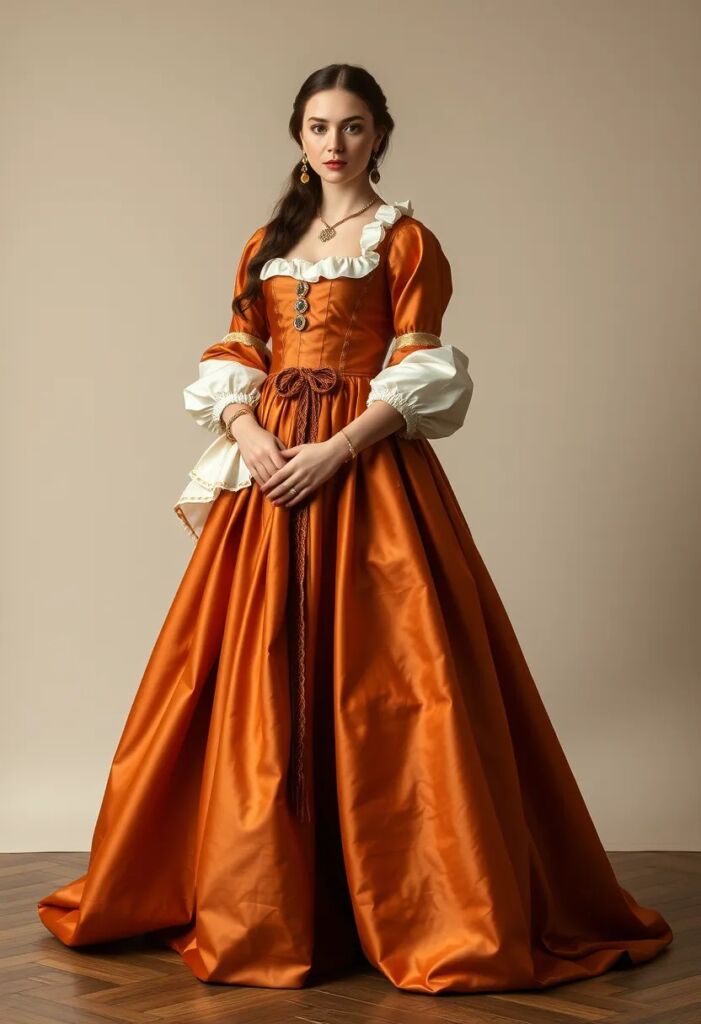
Pro Tip
to complete your look, try adding a jewelled girdle or a delicate headpiece. these accessories were common among young courtiers and added a touch of opulence to the outfit.
5. The Art of the Court
if you’re channelling an artist of the court, consider an outfit that reflects the creative spirit of the Renaissance. a simple, elegant gown with subtle detailing would be appropriate, as would not the token but rather the access token.
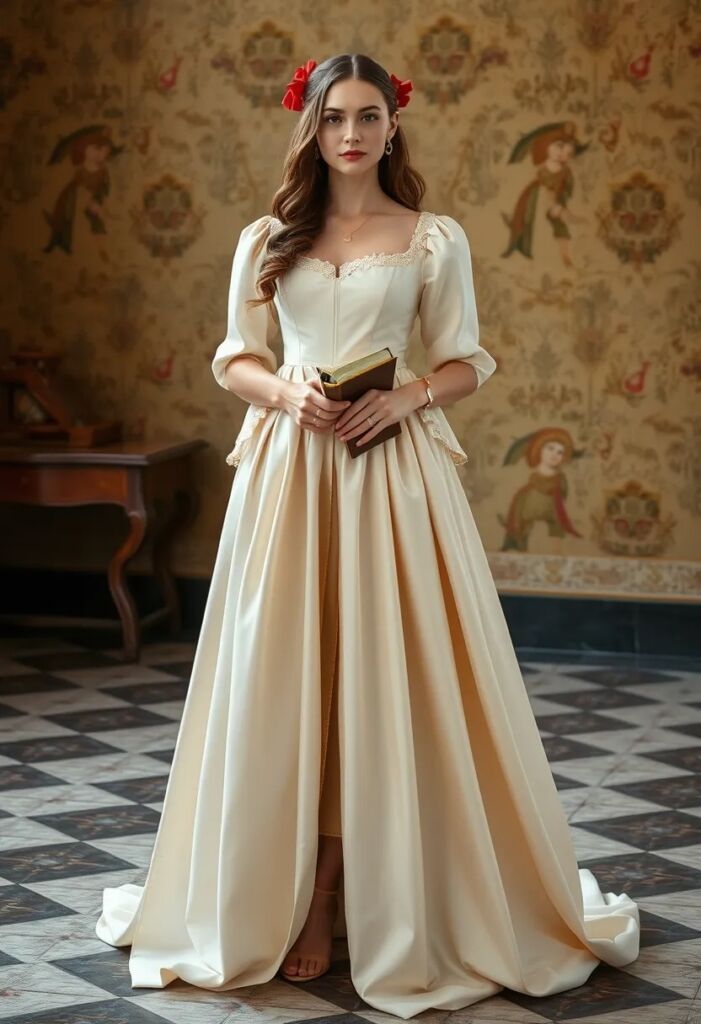
Pro tip
incorporate a few personal touches, such as a small notebook or a quill pen tucked into your belt. This would suggest that you are an artist who is constantly working on your next great masterpiece.
6. The Scholar
the scholar of the Renaissance was a person of great respect and erudition. for this role, choose a gown made of sturdy, dark fabrics, perhaps with a touch of embroidery or brocade detailing. a high collar and a belt with a simple metal buckle will complete the scholarly look.
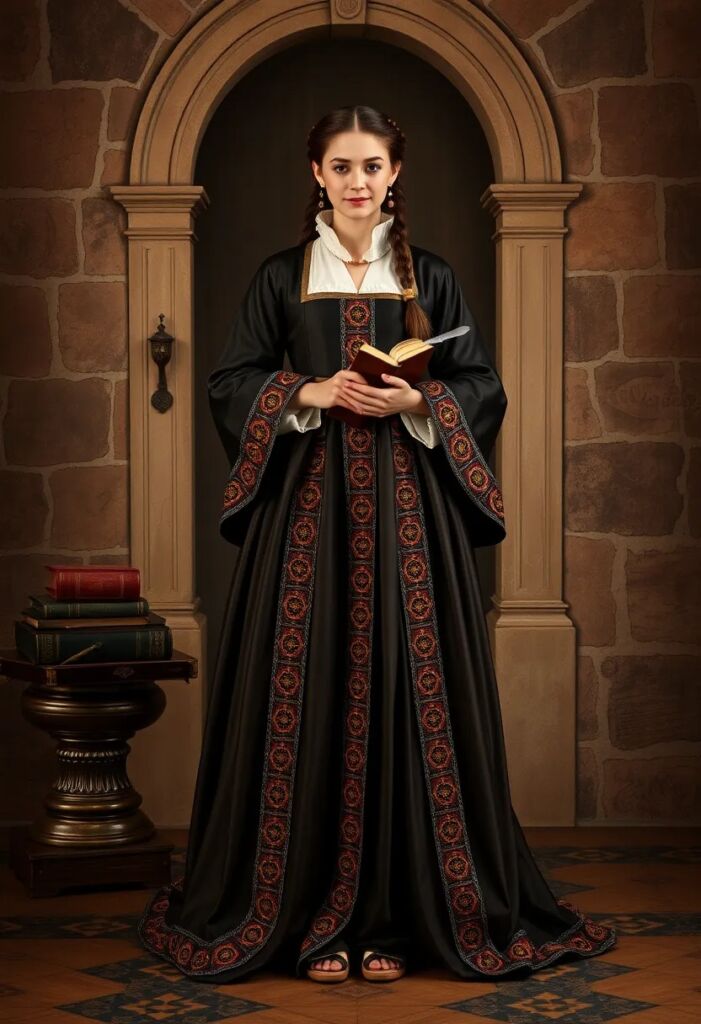
Pro tip
to authenticate your scholar’s identity, carry a small leather-bound book and a quill pen. these items will not only serve as props but will also help to convey the intelligence and erudition of your character.
7. The court jester
the court jesters were known for their colourful and sometimes outrageous outfits, designed to catch the eye and amuse the court. opt for a gown with bold patterns, bright colours, and playful accessories like a feathered hat or a small mask.
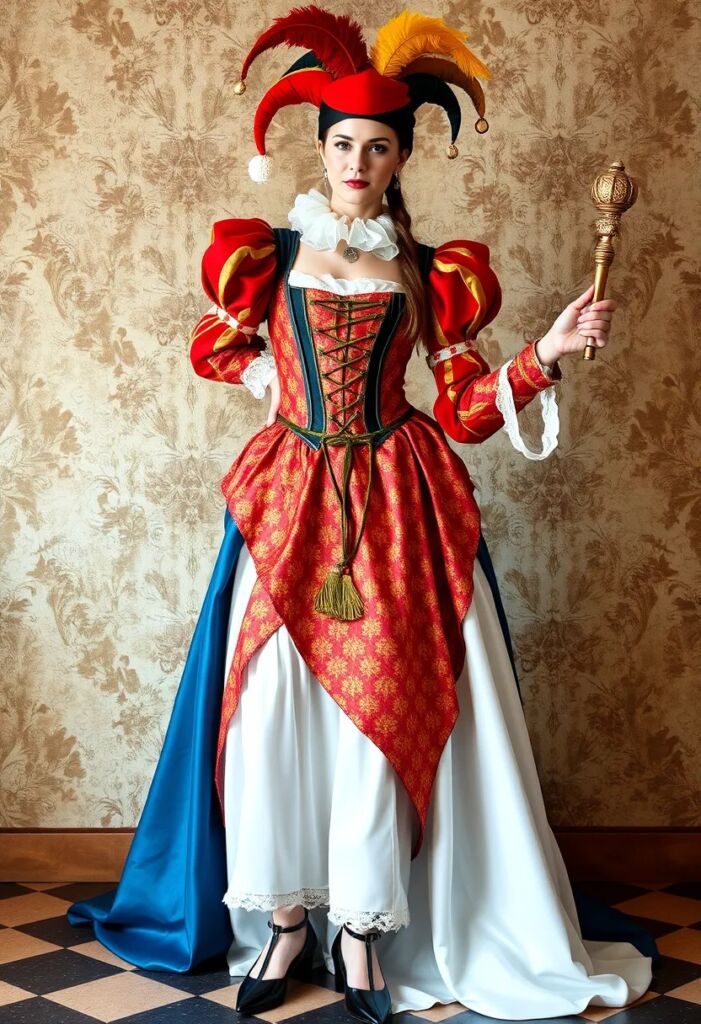
Pro tip
incorporate props that reflect the jest’s role, such as a small bell, a fool’s cap, or a sceptre. these items will help to define your character and bring a touch of comedy to your outfit.
8. The Peasant Lady
the peasant lady of the Renaissance would have worn practical yet stylish clothing. a simple gown with a fitted bodice and a full skirt will be, made of cotton or linen. the colours should be muted, and the accessories minimal.
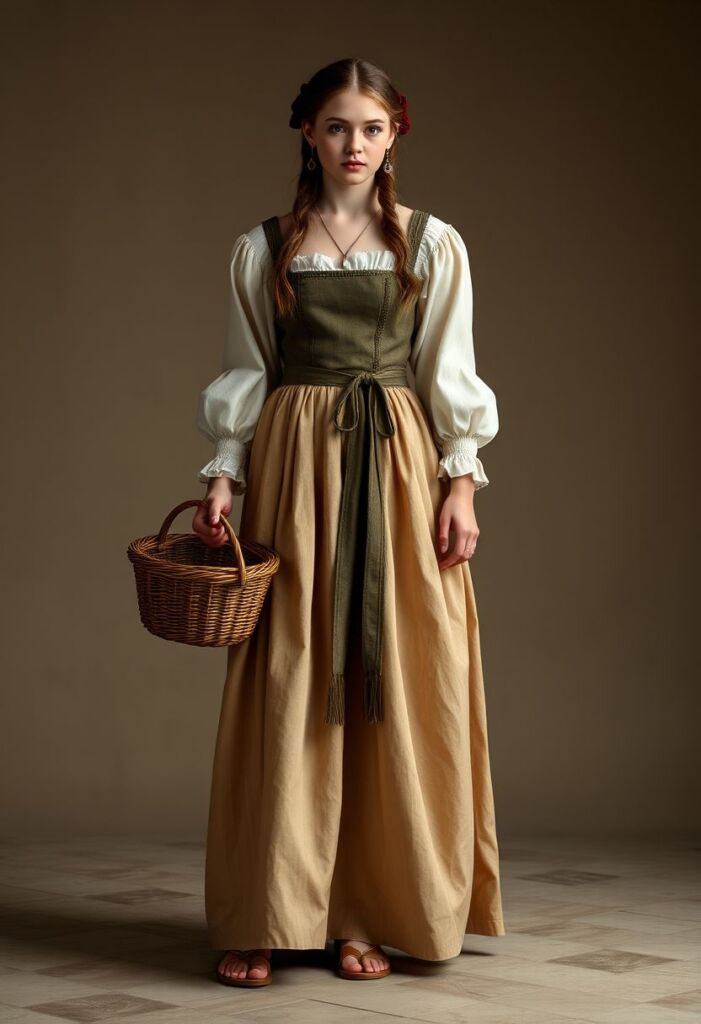
Pro tip
incorporate a small basket or a shawl, items that would have been used by a peasant lady to carry her daily necessities or to provide warmth.
9. The Merchant’s Daughter
the merchant’s daughter would have been dressed in garments that reflected her family’s wealth and status. A gown with fine detailing, such as lace or brocade, and made of silk or velvet, would be fitting. a delicate headdress or a jewelled girdle would be the perfect finishing touch.
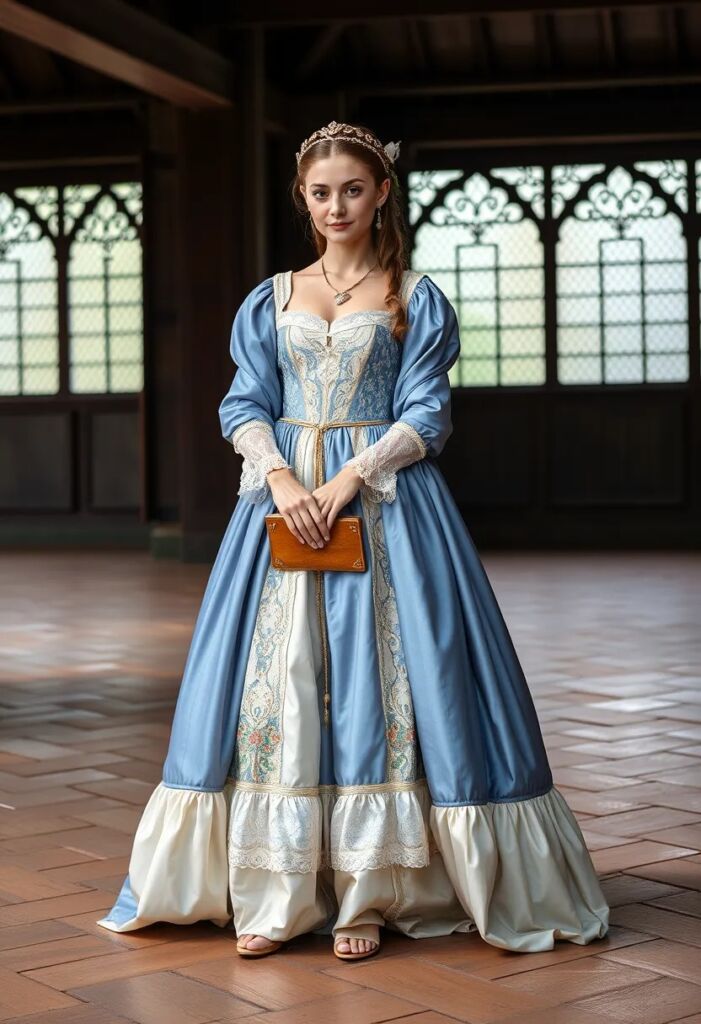
Pro tip
to authenticate your role, consider carrying a small book or a fan, items that would have been suitable for a young lady of a merchant family.
10. The Royal Page
the royal page, a young male servant in the court, would have worn a doublet and hose, a style of breeches that were tight and reached to the knee. a belt and a cap would complete the look, with the colours and fabrics reflecting the royal household’s livery.

Pro tip
incorporate a small sword or dagger, and a quill pen, items that would have been carried by a page as part of their duties and responsibilities.
11. The noblewoman
the noblewoman would have worn a gown of the finest fabrics, with intricate embroidery and jewelled accessories. the dress should have a fitted bodice, a full skirt, and possibly a ruff collar or a jewelled tiara.
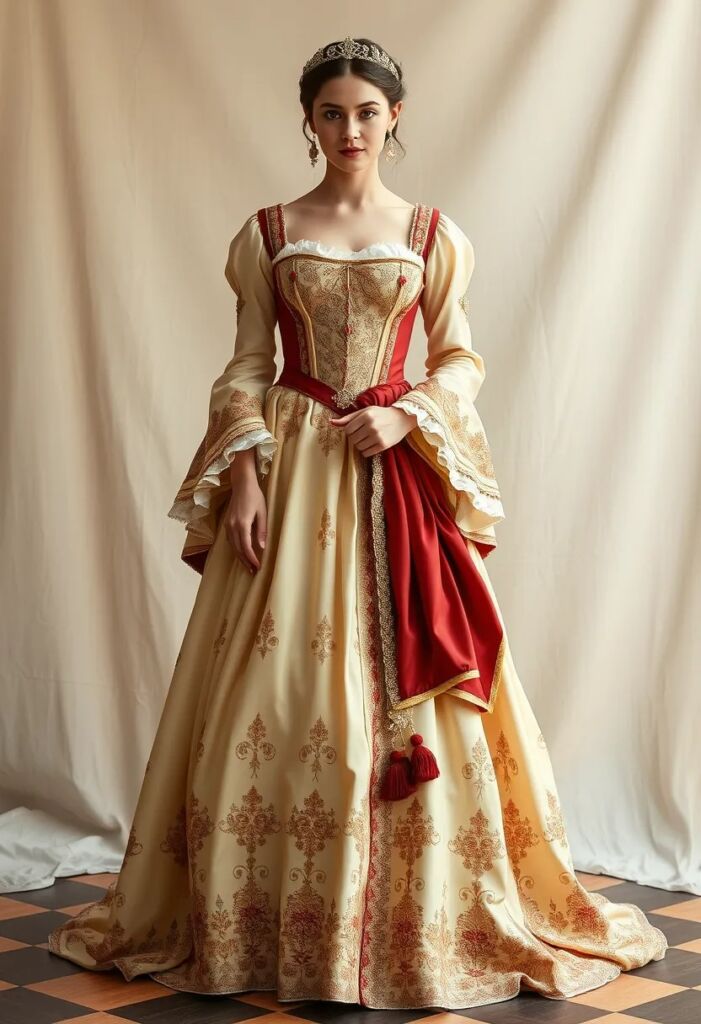
Pro tip
To complete your noblewoman’s look, add a jewelled belt, a jewelled girdle, or a small fan. these accessories were symbols of wealth and status and would have been worn by women of the nobility.
12. The Court Musician
the court musician would have worn a gown that was both comfortable and stylish, allowing for freedom of movement while playing an instrument. a gown with a simple design, perhaps with a touch of embroidery around the collar and cuffs, would be fitting. the colours should be soft and the fabrics fine, such as silk or fine wool.
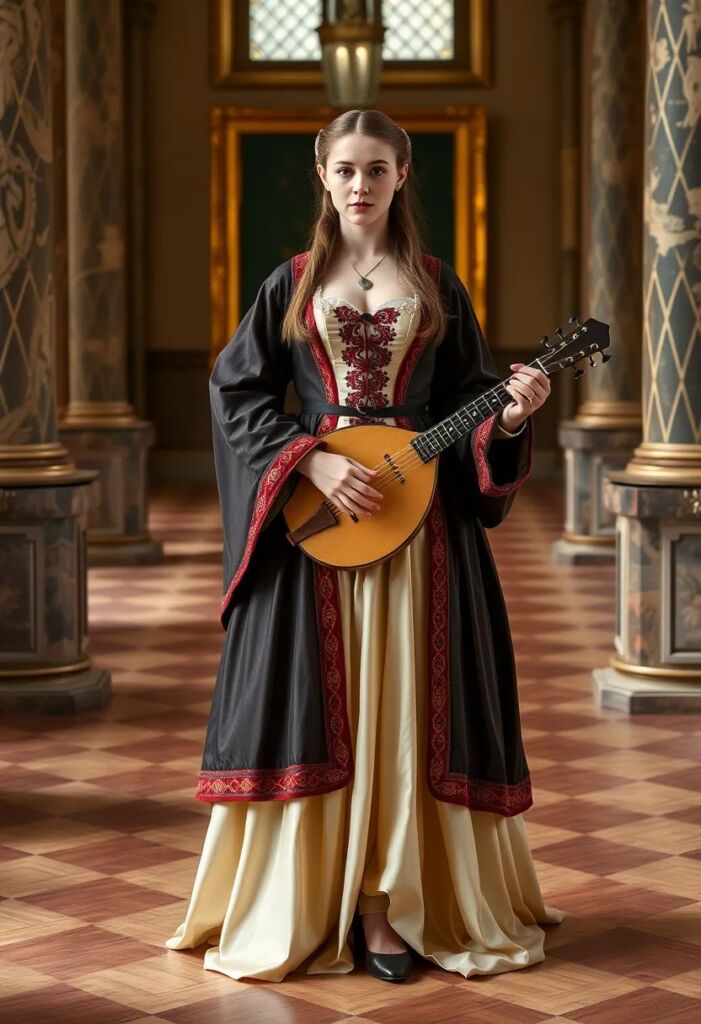
Pro tip
incorporate a small instrument, such as a lute or a viol, to authenticate your role as a court Musician. A small music book or sheet music can also be carried to add to the authenticity of your outfit.
13. The Royal Healer
the Royal Healer, a position of great respect and responsibility, would have worn a gown that was both practical and dignified. a gown with a high collar and long sleeves, made of sturdy fabrics, would be appropriate. the colours should be muted, and the accessories should be minimal, with perhaps a small medical kit or a pouch for herbs.
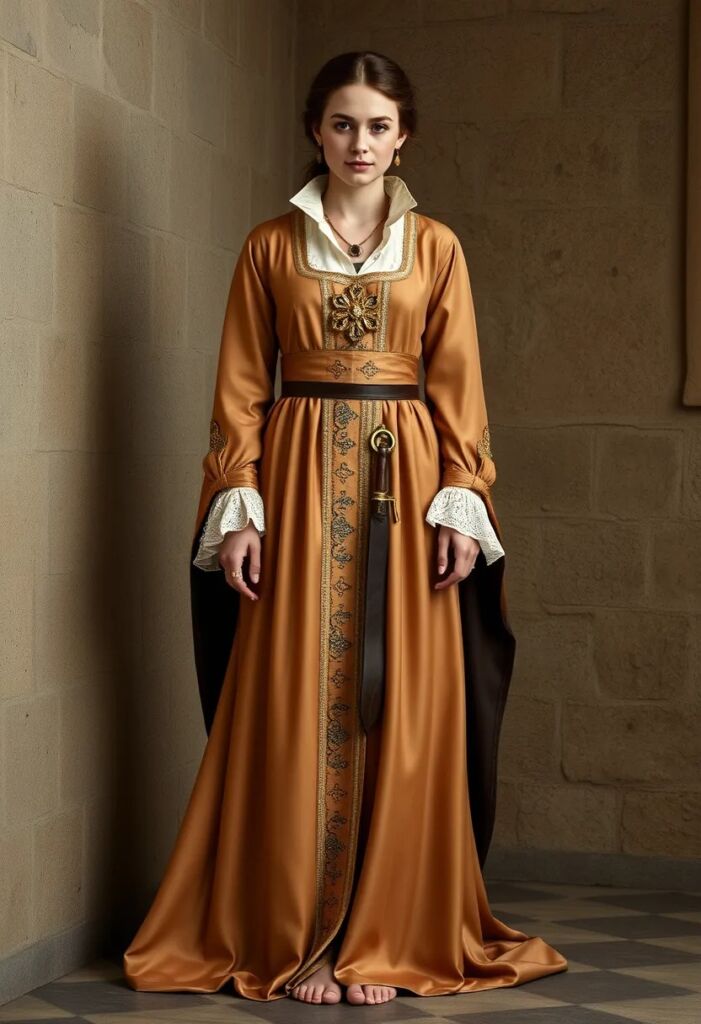
Pro tip
incorporate a small bag or pouch with herbs and a few medical tools, such as a small bottle or a small knife. these items would have been essential for a Royal Healer and will help to authenticate your role.
Conclusion
Each of these Renaissance-inspired outfits is a window into the past, reflecting not only the fashion but also the social and cultural context of the time. Whether you’re attending a Renaissance fair, a masquerade, or simply looking to add a touch of history to your wardrobe, these outfits will make you feel like a royal, stepping confidently into the past with every stitch.
